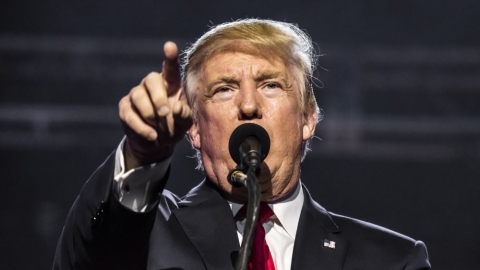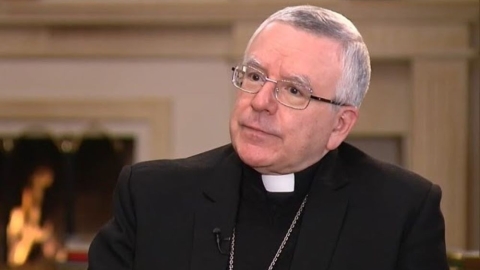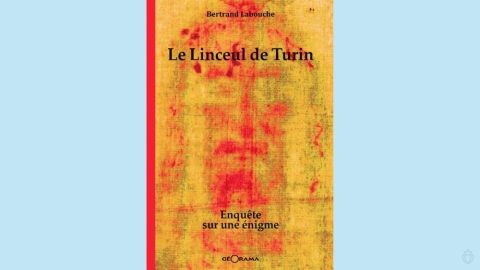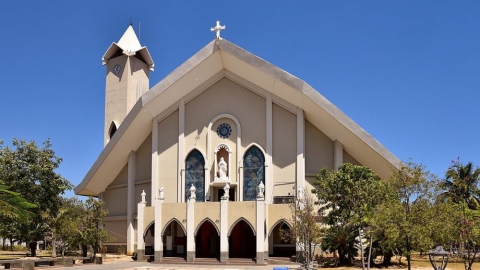Attacks against clerical celibacy

The scandal of pedophile priests that has shaken the Church for several years is providing the secular media with an opportunity to accuse the Pope himself of wrongdoing and to call for the abolition of clerical celibacy. The Parisian daily newspaper Le Monde offers a selection of these attacks, in which one finds insinuations aimed at discrediting Benedict XVI personally, alongside an implicit demand for married priests. The readers may judge for themselves:
- A forthcoming Roman document on pedophile priests “will not remove the questions about what Cardinal Ratzinger, Prefect of the Congregation for the Doctrine of the Faith for more than twenty years, knew about all those scandals” (page 6).
- “Of all the monotheistic religions, the Roman Catholic Church is the only one faithful to this discipline (of clerical celibacy). Such a widespread phenomenon [as the recent scandal] has never been observed in religions where the pastors are married. The Church ought to reexamine its view of sexuality instead of fostering immaturity in its clerics. In Austria, The Most Reverend Aloïs Kothgasser, Archbishop of Salzburg, deemed that ‘the Church must ask itself whether it can keep up this way of life or whether it must change it.’ In 2008 the head of the German Church, The Most Reverend Robert Zollitsch, asserted that ‘the connection between the priesthood and celibacy is not a theological imperative.’ The Church is not out of the world. If it wants to espouse contemporary humanity, it would do well to put an end to this anachronism.”
The journalists who faithfully relay and amplify the theses of progressives [within the Church] sound surly, and no wonder: on March 12, during an audience granted to the participants in a meeting organized by the Congregation for the Clergy, Benedict XVI clearly reaffirmed “the value of sacred celibacy, which is a charism required for ordination in the Latin Church and is held in very high esteem in the Eastern Churches”.
Concerning the media campaign against the Pope, Fr. Federico Lombardi, spokesman for the Holy See, issued a press release dated March 13: “[T]he archdiocese of Munich has replied, with a long and detailed communique, to questions concerning the case of a priest who moved from Essen to Munich at the time in which Cardinal Ratzinger was archbishop of that city, a priest who subsequently committed abuses. The communique highlights how the then archbishop was completely unconnected with the decisions in the wake of which the abuses took place. Rather, it is evident that over recent days some people have sought—with considerable persistence, in Regensburg and Munich—elements that could personally involve the Holy Father in questions of abuse. To any objective observer, it is clear that these efforts have failed.”
On the same day, March 13, L’Avvenire, the daily newspaper of the Italian Bishops’ Conference, printed an interview with Msgr. Charles J. Scicluna, promoter of justice of the Congregation for the Doctrine of the Faith, whose job it is, among other things, to investigate members of the clergy who are accused of abusing minors. The most illuminating excerpts from this interview follow:
Q: Nonetheless, that document (a Roman document establishing norms to follow in cases of solicitation during Confession and of other “particularly serious crimes” of a sexual nature, such as the abuse of minors—Editor’s note) is periodically cited to accuse the current Pontiff of having been—when he was prefect of the former Holy Office—objectively responsible for a Holy See policy of covering up the facts... .
A: That accusation is false and calumnious. On this subject I would like to highlight a number of facts. Between 1975 and 1985 I do not believe that any cases of pedophilia committed by priests were brought to the attention of our Congregation. Moreover, following the promulgation of the 1983 Code of Canon Law, there was a period of uncertainty as to which of the “delicta graviora” [“particularly serious crimes”] were reserved to the competency of this dicastery. Only with the 2001 “Motu Proprio” did the crime of pedophilia again become our exclusive province. From that moment Cardinal Ratzinger displayed great wisdom and firmness in handling those cases, also demonstrating great courage in facing some of the most difficult and thorny cases, “sine acceptione personarum” [“without regard to persons”, i.e. without favoritism or human respect]. Therefore, to accuse the current Pontiff of a cover-up is, I repeat, false and calumnious.
Q: What happens when a priest is accused of a “delictum gravius”?
A: If the accusation is well-founded, the bishop has the obligation to investigate both the soundness and the subject of the accusation. If the outcome of this initial investigation is consistent [with the accusation], he no longer has any power to act in the matter and must refer the case to our Congregation, where it is dealt with by the disciplinary office.
Q: Who staffs that office?
A: Being one of the superiors of the dicastery, I’m on that staff, along with a bureau chief, Fr. Pedro Miguel Funes Diaz, seven other priests, and a lay lawyer who follow these cases. Other officials of the Congregation also collaborate, depending on the language and specific requirements of each case.
Q: That office has been accused of working little and slowly... .
A: Those are unjustified comments. In 2003 and 2004 a great wave of cases flooded over our desks. Many of them came from the United States…. In recent years, thank God, the phenomenon has waned, and we now try to deal with new cases as they arise.
Q: How many have you dealt with so far?
A: Overall in the last nine years (2001-2010) we have considered accusations concerning around 3,000 cases of diocesan and religious priests, which refer to crimes committed over the last fifty years.
Q: That is, then, 3,000 cases of pedophile priests?
A: No, it is not correct to say that. We can say that about 60% of the cases chiefly involved sexual attraction towards adolescents of the same sex, another 30% involved heterosexual relations, and the remaining 10% were … based on sexual attraction towards prepubescent children. Therefore in nine years there have been about 300 cases of priests accused of paedophilia. Please don’t misunderstand me, that is of course too many, but it must be recognized that the phenomenon is not as widespread as has been believed.
Q: Of the 3,000 accused, then, how many have been tried and condemned?
A: Currently we can say that a full trial, penal or administrative, has taken place in 20% of cases in the diocese of origin—always under our supervision. Only very rarely is there a trial here at the Vatican, which allows us to speed up the process. In 60% of cases there has been no trial, above all because of the advanced age of the accused; administrative and disciplinary measures have been taken against them instead: they may be prohibited from celebrating Mass in public or from hearing confessions, or obliged to live a penitential life in seclusion. It must be made absolutely clear that in these cases, some of which are particularly sensational and have caught the attention of the media, there has been no acquittal. It's true that there has been no formal condemnation, but if a person is obliged to a life of silence and prayer, then there must be a reason....
Q: That still leaves 20% of cases....
A: We can say that in 10% of cases, the particularly serious ones in which the proof is overwhelming, the Holy Father has assumed the painful responsibility of authorizing a decree of dismissal from the clerical state. [For those priests, “laicization”] is an extreme but unavoidable measure. In the remaining 10% of the cases, the accused priests themselves requested dispensation from their priestly duties, requests which were promptly accepted. Among these were priests who had been found in possession of pedophile pornographic material and sentenced by the civil authorities for that crime.
Q: Where do these 3,000 cases come from?
A: Mostly from the United States which, in the years 2003-2004, represented around 80% of the total number of cases. In 2009 the United States’ “share” had dropped to around 25% of the 223 new cases from all over the world. In recent years (2007-2009), the annual average of cases reported to the Congregation has been 250. Many countries report only one or two cases; although a growing number of countries are involved, the phenomenon itself is much reduced. Recall that there are 400,000 diocesan and religious priests in the world—a statistic that does not correspond to the perception that is created when these sad cases occupy the front pages of the newspapers.





